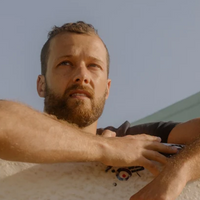Everyone goes through trials and tribulations in their lifetime. While that may not be news to you, the truth of the situation may not have an easy solution. Western civilization has not been quick to adopt a technique of dealing with life stresses that some Eastern cultures have. In fact, even the name meditation gives off a mysterious vibe when spoken out loud. Fortunately, meditation can be easy to practice, specifically with transcendental meditation. Here is an introduction to what meditation is, what benefits it can bring, and how you can pick it up.
The dictionary breaks meditation down into a simple definition. Meditation practices involve contemplation, reflection, and mental exercise. By this definition, most people do this absentmindedly while drifting off to sleep, relaxing in a bathtub, or any other time they are not engaged in an activity. However, the last part of the definition brings the concept into shape; it is a practice and exercise. Transcendental meditation utilizes a distilled technique fifty years in the making to streamline the process.
Most guided meditation exercises have you sit and listen to someone drone on about what you should be reflecting on. These can be wonderful exercises and truly expand your mental acuity. However, if you are just getting into the world of meditation, you may lack the focus and discipline to get the full spectrum out of these guided exercises. Transcendental meditation takes the guided portion out of it and replaces it with a chant. While the concept of a guide still exists, it comes from within you and helps guide you.
You may have heard of transcendental meditation before. If you have not tried the exercise, it is never too late to start. The difference between TM and other guided meditation styles comes from the mantra-based style that TM utilizes. The practice first came to the western world in the 70s by Maharishi Mahesh Yogi. The Vedic teachings in his specific type of meditation work as a natural way to ease your body into a trance type of rest that energizes the mind and body. While in this state of mind, you follow the simple process and recharge while letting your mind roam.
Many people report problems with concentration or getting into the groove to meditate. TM helps combat that issue with an easy to follow program. First, get into a relaxed seating position. Most people default to the lotus position, but that is not important for the exercise. Next, you will repeat the mantra given to you by a teacher in your mind for twenty minutes twice a day. That is it. Remember, this technique is specifically meant to be simple, but the exercise does so much more than this. Next, check out some of the benefits and some specifics on the technique.
What Are The Benefits?
You may be thinking, what could repeating one phrase over and over again for such a short time possibly do? Over 600 studies have been tested to show the positive benefits of transcendental meditation. Practicing twice a day can help change your entire life by helping your mind, body, and soul. Studies on meditation demonstrate it may work in helping brain processing power and focus in ADHD students, lower blood pressure, and several other health benefits. What can it do for you, though?
Physical Benefits
Well, starting in the easiest and most measurable benefits, your body goes through several changes. First and foremost, TM can help you get better sleep, and if you have done any research into sleep patterns, good sleep creates better health all around. Aside from that fact, TM may help reduce your blood pressure and cholesterol. This means a lower chance of heart attacks and stroke and an overall healthier lifestyle. These factors will boost your overall energy throughout the day.
Mental Benefits

The physical benefits pale in comparison to the mental benefits. When it comes to the mind, opening the doors to meditation brings about several mental boosts to help you in your day. TM can help with your ability to focus and cognitive function. These factors, in turn, help with your productivity, mental acuity, and memory. Can you imagine what you could do with the extra brainpower to close more sales, focus on the important tasks, or just the calmness to get through the day?
Spiritual Benefits
The last factor looks at your soul. But how can it help the soul? Well, TM starts by giving you a chance to reflect on things that are stressing you out. The benefit there helps reduce stress and anxiety. This, in turn, leads to better control over your emotions and a general sense of increased happiness. Lastly, letting your mind wander can do wonders for your soul by letting the doors of creativity open. These all lend towards a better life, a better existence, and a better attitude towards everything in your life.
Remember, you are not just your body or just your mind; you are you. The beautiful part about transcendental meditation comes from the total package. TM helps each part of you, which transforms the whole of you. The word transcendental comes from transcend, to become better than the sum of your parts. A simple twenty-minute exercise twice a day enhances each part of you. Better sleep gives you a better ability to focus, which can open possibilities for creativity and happiness. Each benefit feeds into a loop of another benefit.
Regardless of where you stand on the topic, scientific research can both show meditation as a boon or a hoax. Think of it as a tool, another option to help cut through life’s hardships. The benefits outlined show a few possibilities of ways that TM can help you. Another way transcendental meditation benefits you comes with opening your mind to the possibilities. It can lead to self-awareness, deeper understanding of yourself, and many other experiences you may not have otherwise.
How To Do It?
If you are still reading and on the fence on whether TM is the right for you or not, try this challenge out. For the next thirty days, set aside a little bit of time to try out the transcendental meditation method. As mentioned, the simple portion of the technique is to find a comfortable sitting position and repeat your mantra for twenty minutes twice a day. If you sign up for a course or a teacher, a mantra can be given to you. This mantra should never be said aloud and should be something personal for you. These mantras do not have to be assigned, but having it given to you can help the process.
Most classes will ask you not to share the details of your experiences during your meditation session. It may sound cliché or like a hoax to put it that way but remember this is your personal journey. Aside from that, meditation gives subjective experiences. Even guided meditations will differ from one person to the next. If you want to document your experiences, create a journal, but keep it to yourself. Over the course of the challenge, your views on the exercise and the act of meditation may radically change.
You may be reading and thinking that twenty minutes seems like a long time to sit and do nothing. Fortunately, twenty minutes can fly by, especially once you get the hang of getting into the groove. For twenty minutes each session, you will repeat your mantra mentally over and over. This may come across as boring and tedious. Again, stick with it for thirty days and see if you see the shift. That shift will be from, “my god what a boring twenty minutes” to “where did the time go? I want to go longer.”
Another concern you might have may be what to do with your mind. Remember, this technique came from the idea of no constraints. If your mind wanders and starts looking at all the problems you have on your plate, that is okay. If you accidentally stop saying your mantra, just start up again. This is a personal journey, and each experience is unique. Meditation does not have a wrong answer. Even if you end up falling asleep for a few minutes, that is alright too. You are encouraged just to take that twenty minutes and hold yourself to no standard and just be.
If you are ready to begin, nothing stops you but yourself. Take up the chant today and try it out. You are not required to go to a class, buy anything, or even continue. There are benefits to taking the course, though, such as a support group, a teacher who can help guide you and mentor you through tough times, and just an overall sense of belonging. You can absolutely do the research and get started on your own without ever spending a dime. It all boils down to self-discipline, though. Having a teacher can help you stay on course, but at the end of the day, this is your journey. Take thirty days and try the challenge out, no obligations, no payments, just opportunity.
Sources
Link 1 - https://www.tm.org/
Link 2 - https://www.meditationtrust.com/what-is-transcendental-meditation/




